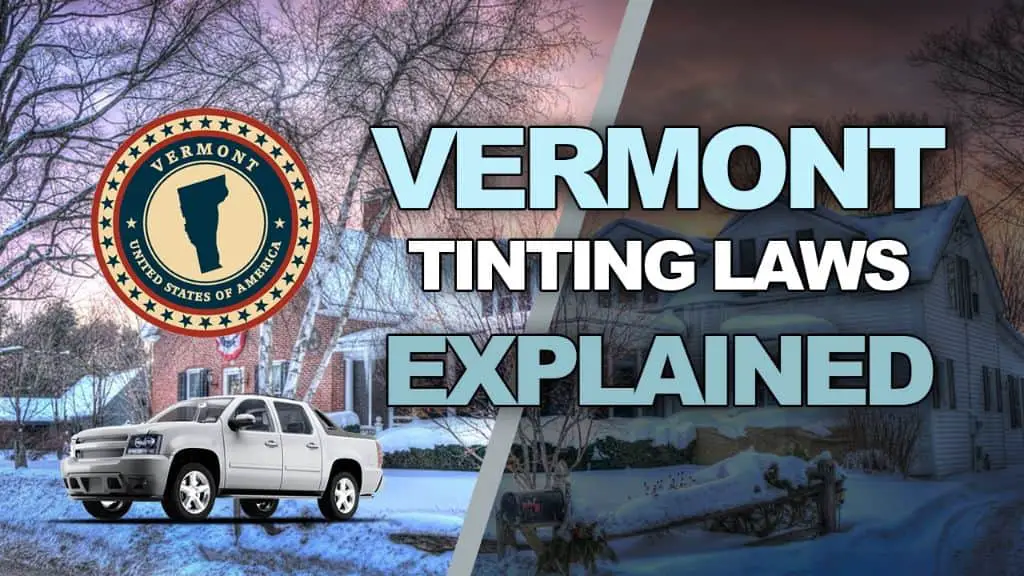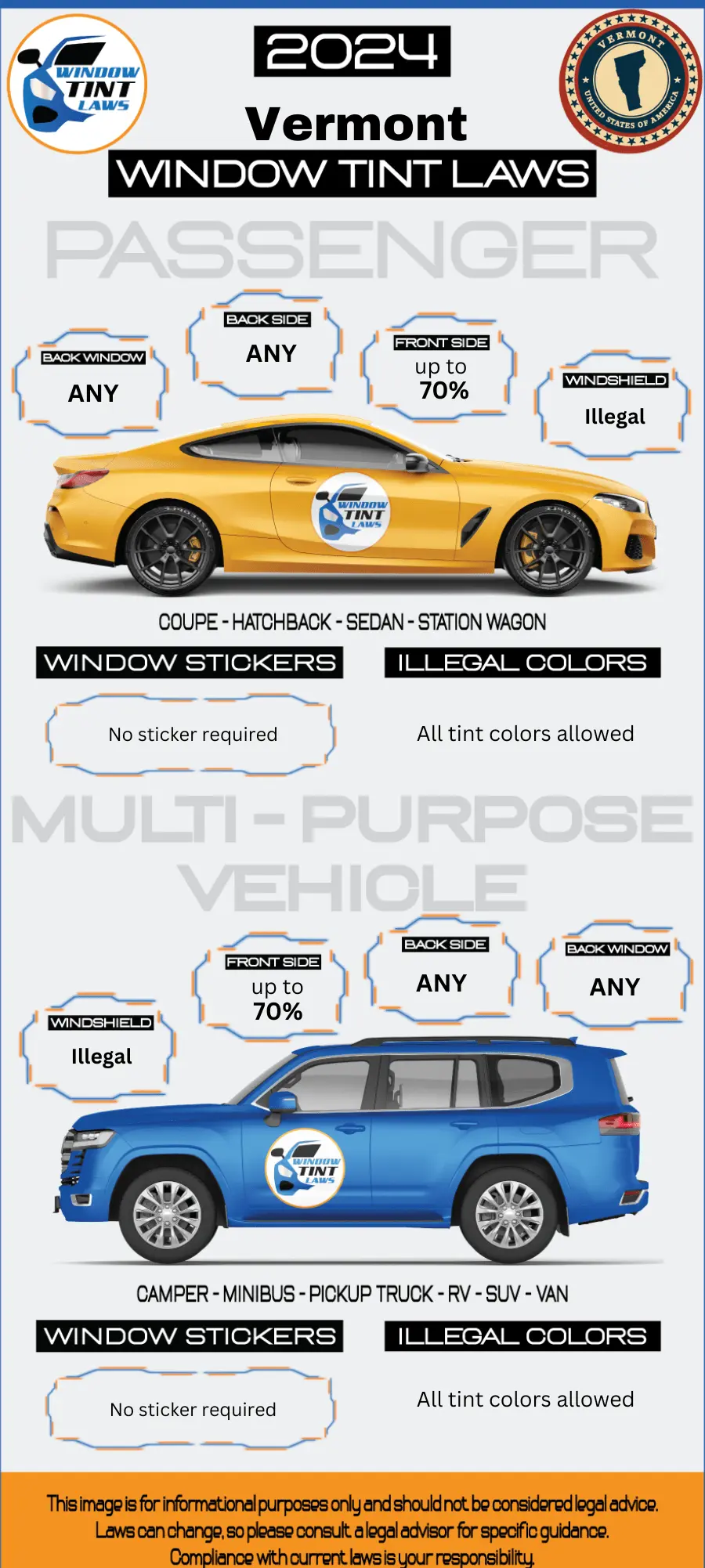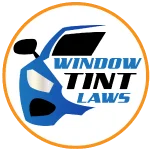

Article Created by Ryan Pietrzak
Last updated on February 14, 2024Vermont Tint Laws – 2024 Updated Legal Tint Limit
Please note that Vermont Tint Laws Regulation can change daily and may be interpreted differently at the city or county level. We recommend verifying this information with your local DMV or law enforcement agencies. We have manually fact-checked this content using official state resources. Vermont enacted tinting laws in 1984. If any information provided is incorrect or outdated, please contact us so we can make the necessary corrections. Thank you.
2024 Vermont Tint Laws – Legal Tint Limit For Passenger Vehicles.
- Front Windshield: Tint is not allowed on the windshield.
- Front seat side windows: Must allow more than 70% of light in.
- Back seat side windows: Any tint darkness can be used
- Rear window: Any tint darkness can be used
2024 Vermont Tint Laws – Legal Tint Limit For Multi-Purpose Vehicles
- Front Windshield: Tint is not allowed on the windshield.
- Front seat side windows: Must allow more than 70% of light in.
- Back seat side windows: Any tint darkness can be used
- Rear window: Any tint darkness can be used

- Medical exemptions: Vermont tint laws permit darker tints on front side windows with a doctor’s note
- Vermont tint law prohibits metallic or reflective tint on any of the windows
- Vermont tint laws are statewide with no additional local regulations
- Violating Vermont tint laws can generally ranges from about $162 to $232 or more.
What does VLT Mean according to Vermont Tint Laws?
- Window tint film’s light transmission is measured as VLT (Visible Light Transmission) and each state has its own legal limits for VLT on car windows.
- A HIGHER VLT means that more light is allowed to pass through the window tint film.
- Example: a 75% tint will allow 75% of the light to pass through whereas a 5% tint will only allow 5% of the light to pass through, making the 5% tint a much darker film.
- Vermont window tint laws has specific VLT limits for Passenger Vehicles and Multi-Purpose Vehicles.
FAQ’s Regarding Vermont Tint Laws and Vermont Legal Tint Limit
What is the darkest legal tint in Vermont?
In Vermont, the darkest legal tint for sedans and SUVs/vans is different for various windows. For both types of vehicles, the front side windows are not allowed to have any tint applied. However, for the back side windows and the rear window, there is no restriction on the darkness of the tint, allowing vehicle owners to choose any level of tint darkness for these windows.
Are police exempt from window tint laws in Vermont?
In Vermont, law enforcement vehicles are generally not exempt from window tint laws. However, law enforcement agencies may have certain allowances for window tint that comply with state laws and regulations. The specific rules regarding window tint for law enforcement vehicles can vary from one jurisdiction to another within the state
How do I get a tint waiver in Vermont?
To obtain a window tint waiver in Vermont for medical reasons, you need to contact the Vermont Department of Motor Vehicles (DMV) and follow their guidelines. You must obtain a medical certificate or letter from a licensed medical professional, outlining your specific medical condition and the necessity of window tinting for health reasons. After completing the required application form and attaching the medical documentation, you submit it to the Vermont DMV for review and approval.
How much is a tint ticket in Vermont?
The cost of a window tint ticket in Vermont generally ranges from about $162 to $232 or more. This cost can vary based on the specific violation, where the ticket was issued, and the enforcement officer’s discretion
Can you get pulled over for tint in Vermont?
Yes, you can get pulled over for window tint violations in Vermont. Vermont has specific laws and regulations regarding window tint darkness on vehicles, and law enforcement officers can stop a vehicle if they believe the window tint is in violation of these laws.
How to get a Tint Exemption in Vermont
Vermont allows medical exemptions. A completed application with a signed document by a licensed physician or optometrist must be provided to The Commissioner. Exemption permits must be renewed every 4 years.
The exemption only allows the tinting of side windows next to the driver.
For more information regarding window tint medical exemptions in _____ you can check out this resource:

Ryan Pietrzak
Creator of Windowtintlaws.us
